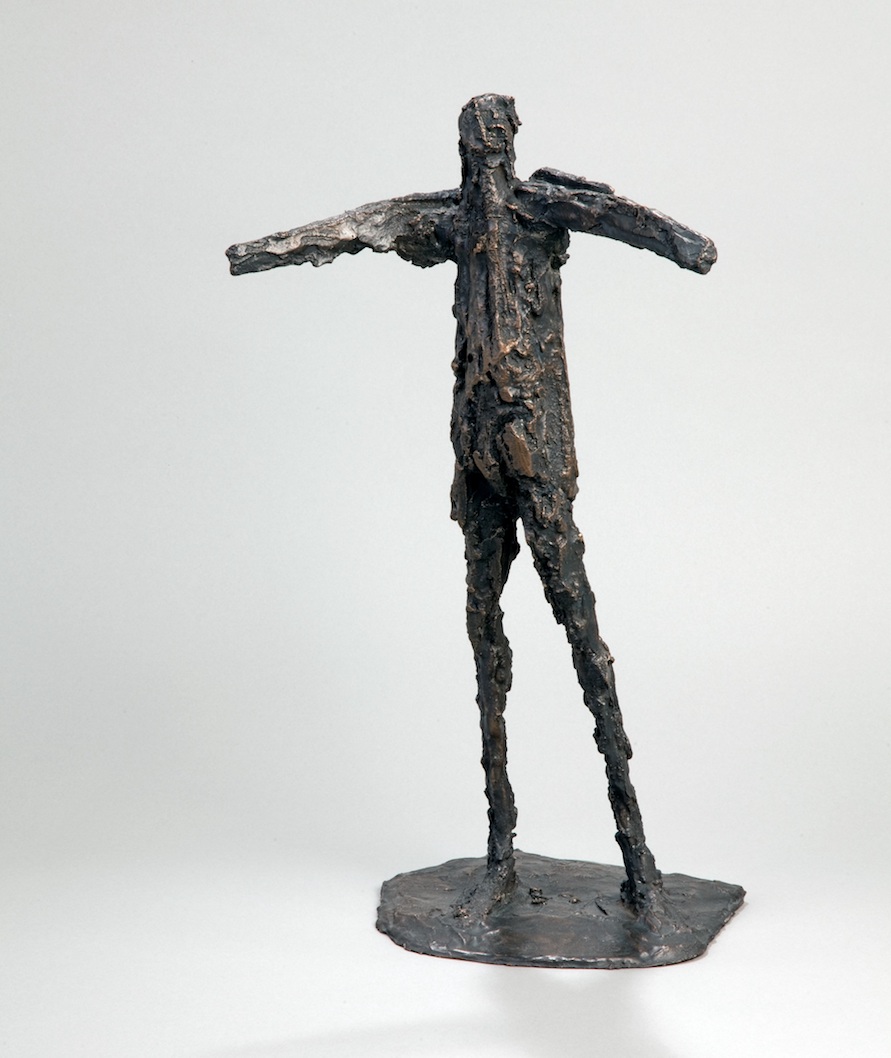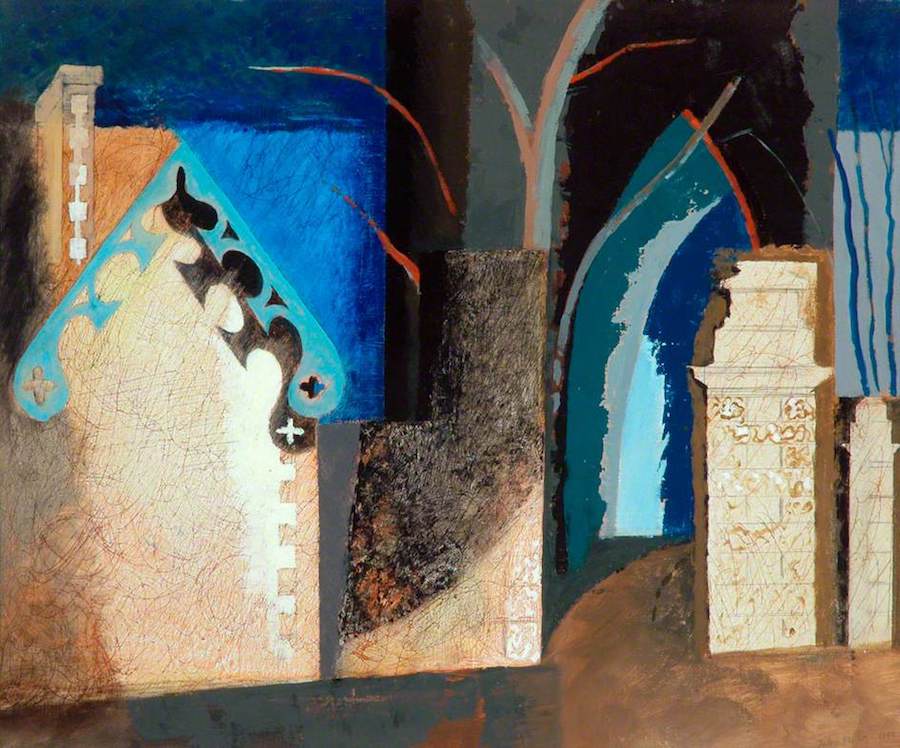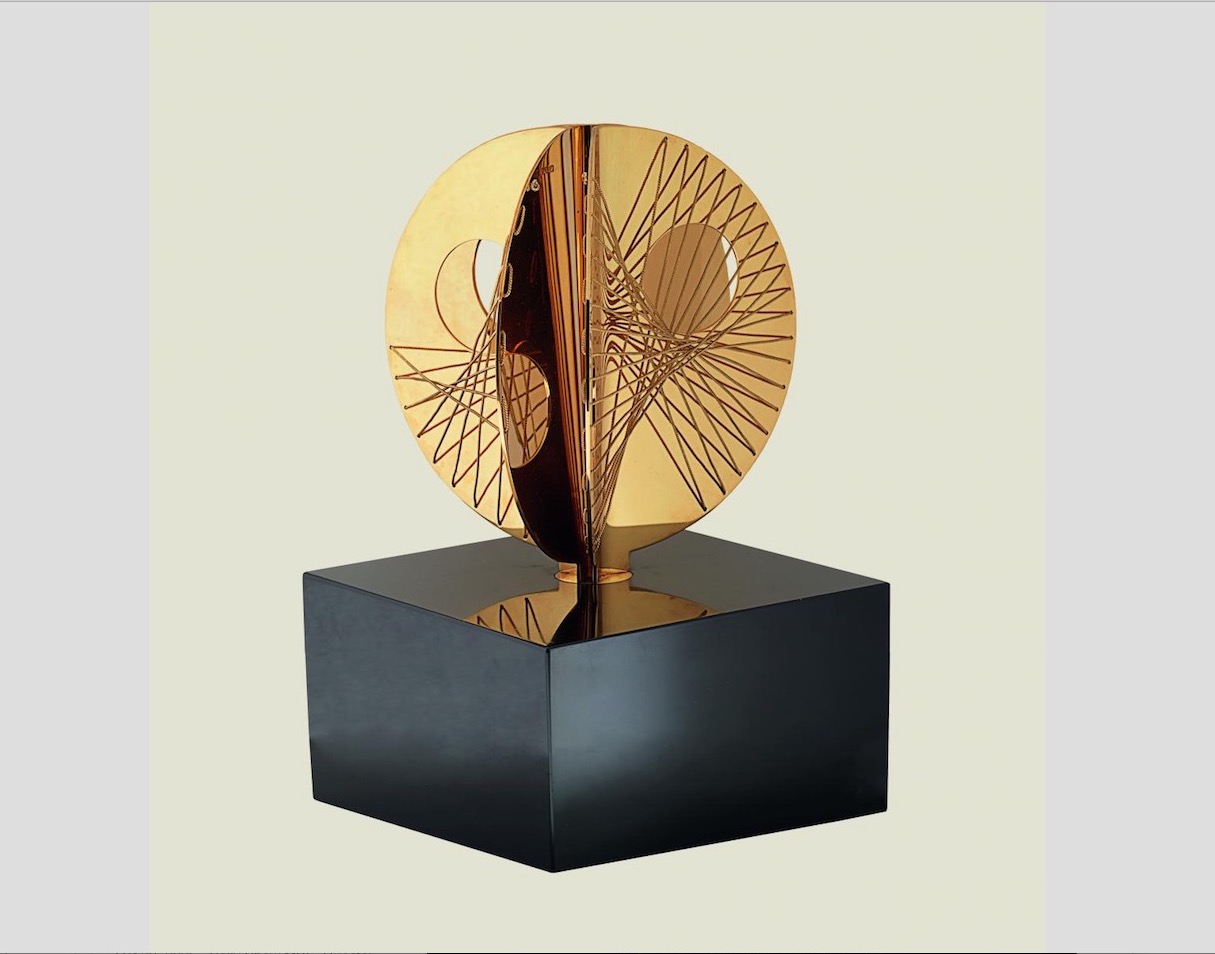Sally Shaw MBE, Director of Firstsite, says: “Into Abstraction: Modern British Art and the Landscape offers a powerful way to view 20th-century British history through art, showing how artists such as Barbara Hepworth, Elizabeth Frink, and L.S. Lowry used imagination to respond to the world around them, revealing hidden stories and perspectives.”
In his book ‘The Invention of British Art’, Bendor Grosvenor identifies landscape painting as a distinctively British art that reached its apotheosis in the work of John Constable and J.M.W. Turner. He writes that: “The school of landscape painting the British developed was the cultural expression of multiple ideas of long duration that came together towards the latter half of the eighteenth century, and which in combination were unique to Britain.’ As a result, this school had invented a distinctly British art”.
The key to the work of this school is what has been called the ‘Spirit of Place’: the search for the source of the animating atmosphere in the particular location painted. For both Constable and Turner – Constable in his sketches and Turner in his later works – this search involved abstract experimentation, as the spirit of a place was not to be found simply in a realistic depiction of the landscape in question.

The exhibition at the Firstsite Gallery is an exploration of what happened next: as landscape artists further abstracted their work, abstract artists were inspired by aspects of landscape. Among the highlights are works by Elizabeth Frink, Barbara Hepworth, Patrick Heron, Peter Lanyon, Henry Moore, Paul Nash, John Piper, Graham Sutherland, Keith Vaughan, and many other leading figures in British Modern art.
The works shown reflect Hepworth’s belief that: “The language of colour and form is universal and not one for a special class… it is a thought which gives the same life, the same expansion, the same universal freedom to everyone.” Using that freedom, the exhibition shows how many of Britain’s most influential artists used colour, shape, and form to capture feelings, emotions, and experiences during a century of change.
Spanning the 1920s to the 1970s, the exhibition traces the story of Abstraction across five decades: from playful early experiments and Surrealist influences, to powerful responses to war, industry, and social upheaval. Through watercolour and oil paintings, sculpture, print and woodcut, the works included explore themes of class, sexuality, psychological anxiety, and industry, showing how Abstraction offered comfort, meaning, and new perspectives during turbulent times.
In the early 1920s and 1930s, artists focused on the deeper emotional and psychological connections between landscape and British identity. By expressing the emotions and experiences landscapes evoke, Abstraction became a means to capture the essence of the natural world. Artists sought to evoke the mood, atmosphere and spiritual connection to the land. Here, we see Roger Fry’s focus on forms, William Roberts’ stylisations, and come closest to Abstraction itself with the symphony of grey tones and forms found in Ivon Hitchens’ Grey Willows by the Coast.

The late 1930s and early 1940s saw a shift towards exploring a landscape of the mind, an interior landscape. Surrealism depicted terrains shaped by emotions and subconscious thoughts. Abstraction became a powerful tool for conveying the dislocation, anxiety and uncertainty of a world on the brink of chaos. Conroy Maddox’s ‘Custodian of the Street’ elides a receding street within a brick archway to frame two figures, a cannon, a ball, a square and a telescope trained on the ground; all rendered in the semi-realistic style of Dalí, Magritte or Delvaux. Here, realism is suggested but is abstracted through its lack of perceived sense-making.
From the 1940s, the horrors of war brought renewed focus to the emotional and spiritual significance of the landscape. Artists blended abstract forms with romantic sensibilities to offer a counterpoint to the chaos of the time and a vision of a world where the natural and the spiritual are inextricably linked. The drawings made in the dark of miners and mines by Henry Moore and Graham Sutherland are full of dramatic contrasts of darkness and light, formed through the wax-resist technique. John Piper used a similar approach in his images of the Welsh mountains.
In the post-war years, Abstraction was employed to process the trauma and devastation left in the wake of conflict. Artists used abstract forms to depict the scarred and altered landscapes of a Britain recovering from war. Surrealism was no longer a required technique as the devastation caused by war created its own surreal sites. Again, Sutherland and Piper were experts in seeing and capturing the drama of the dereliction.
From the mid-1950s to the 1960s, Britain underwent significant industrial and urban transformation. The period saw artists grapple with the impact of modernisation on the British countryside. Works from this time raise questions about the future of Britain’s relationship with its environment. The angularity of works by Wilhelmina Barns-Graham, Merlyn Evans and Adrian Heath is indicative of the geometric artificiality of industrial products and landscapes. Occasionally, such structures are transfigured as in Paul Sharp’s ‘Golgotha, Turleigh Hill’, where telegraph poles are equated to the crosses raised on Golgotha.
Spirituality was a major source of inspiration for many in this period. Nash shared a Christian Science practitioner with Hepworth and Ben Nicholson. Sue Hubbard has noted that Hepworth produced her first ‘pierced’ sculpture ‘at the height of her commitment to a religion that denied the reality of material existence’. Piercing her compositions, as here with ‘Mincarlo, Three Curves with Strings’, ‘allowed her to sculpt not only with matter but with space’, to elide the formal with the spiritual. Christianity informed the work of both Sutherland (a Roman Catholic) and Piper (an Anglican), as it had earlier for Constable. Both Sutherland and Piper were inspired by the spiritual landscapes of The Ancients, particularly Samuel Palmer. They went on to receive major ecclesiastical commissions, as also did Hepworth, Heron and Moore. The access to emotion and atmosphere that Abstraction offers was particularly well-suited to spiritual engagement.
Shaw concludes: “This exhibition underlines the vital role art plays in our lives. In times of upheaval, it helps us express complex emotions, make sense of a chaotic world and connect ideas with feelings. Today, as we face our own unsettled times, Into Abstraction reminds us why art matters — offering meaning, connection and, above all, hope.”
‘Into Abstraction: Modern British Art and the Landscape’, 18 October 2025 – 18 January 2026, Firstsite Gallery
Visit Here

